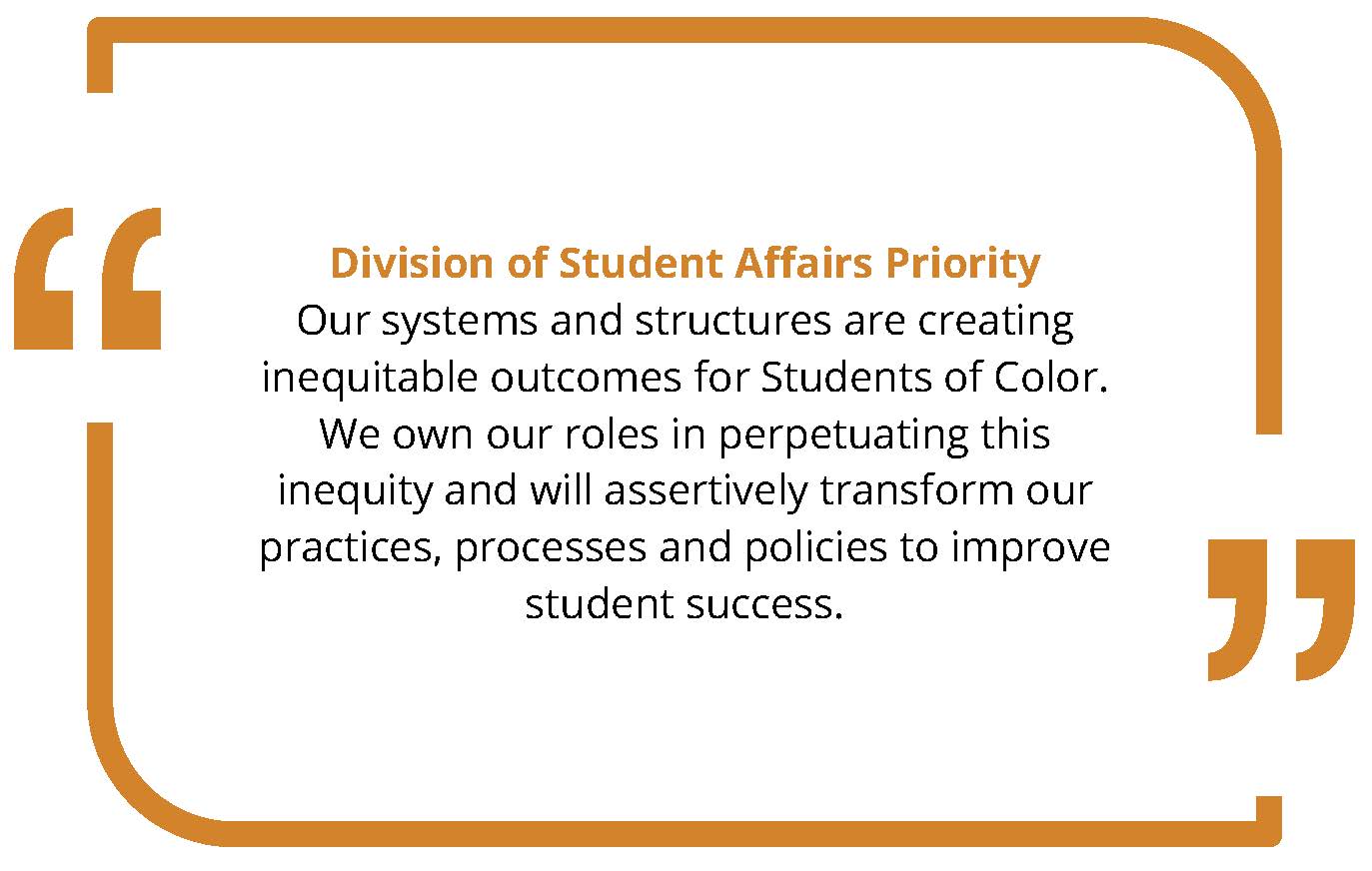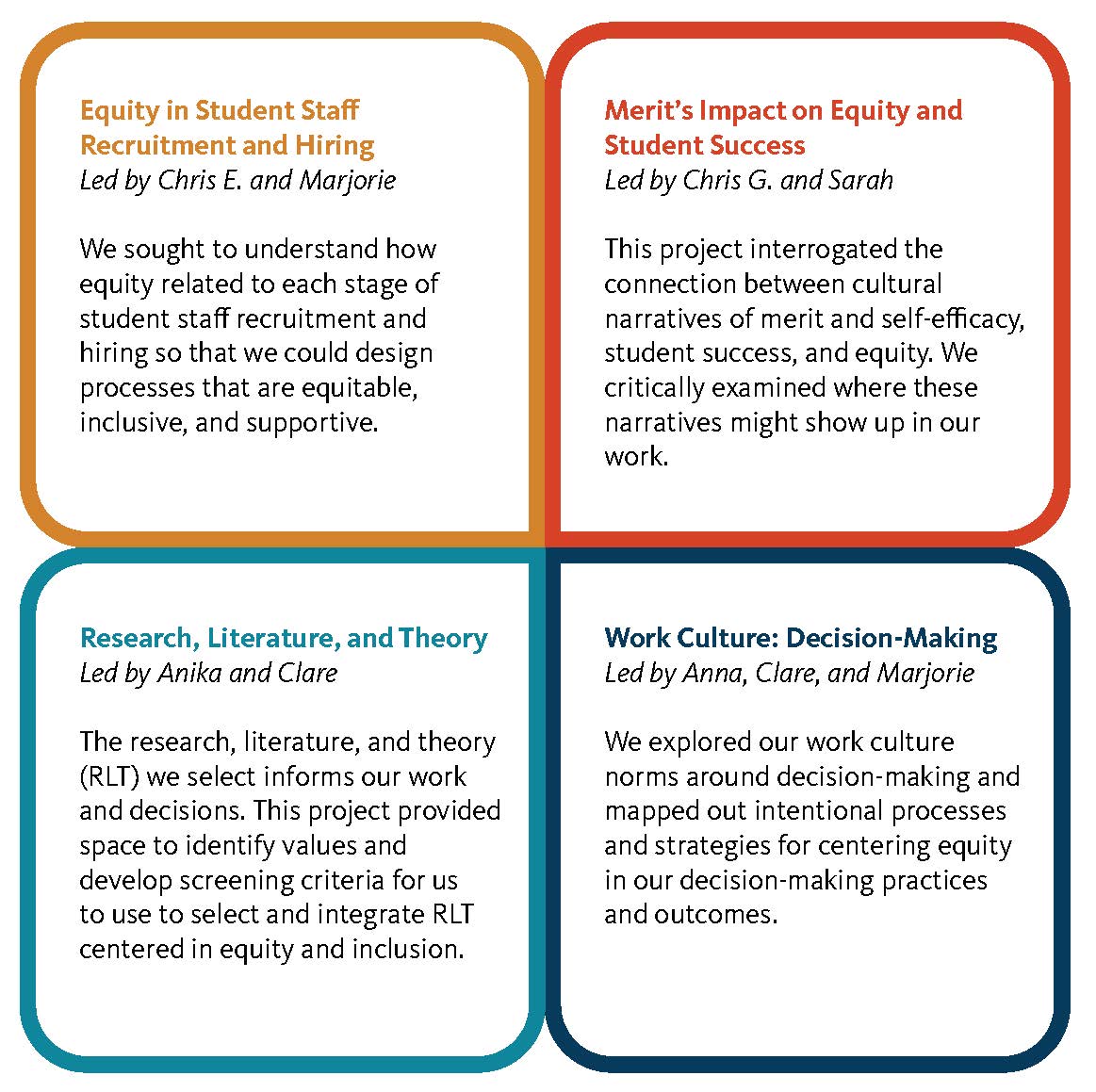by Anna Bentley
Please visit this document for an accessible version of this article.
In support of the Division of Student Affairs (DSA) Priority, the Academic Success Center & Writing Center identified areas of our work to critically examine in order to create more equitable student success outcomes.
 Our unit holds a shared value around equity work and engaging with the Priority. During the 2020-2021 academic year, we engaged in a year-long exploration of four topics:
Our unit holds a shared value around equity work and engaging with the Priority. During the 2020-2021 academic year, we engaged in a year-long exploration of four topics:
(1) Equity in recruitment and hiring of student employees
(2) Merit’s impact on equity and student success
(3) Research, literature, and theory
(4) Work culture/decision-making
We designed a structure for learning about these topics that emphasized shared responsibility and a collaborative approach.
Shared Responsibility to Equity Work
Sometimes we don’t know how to make things better when systems produce inequitable outcomes. We may feel like we need to be an expert in a topic before we offer our ideas, or we need to have an expert tell us what to do in order to make changes. But when it comes to transforming systems and programs that we affect through our decisions and leadership, we can’t wait for an expert to emerge or for us all to know everything before we move forward.
Our team knew that we had a lot to learn about our topic areas, and we all came to the table with different perspectives and degrees of understanding. However, we also acknowledged that we are experts in our own experiences, we are all capable of facilitating conversations, and we all have a responsibility to equity work. With this in mind, we designed an approach to learning together where we had shared responsibility for leading our team’s learning.
Our Collaborative Learning Approach
Each topic for exploration was led by 2-3 members of the ASC & Writing Center. We started by creating milestone documents so we could define our project scope and goals, plan for learning activities, identify takeaways and possible actions, document actions we would take, and create an assessment plan. This structure kept us from rushing the process and jumping to action right away before we were engaged in exploration and learning. Milestone documents also held us accountable to taking action instead of staying in the learning phase indefinitely. The visual below offers a brief description of our milestone documents and the timeline for our projects.
Though we all shared a common timeline and framework for our approach to learning, our topic leaders facilitated topics in ways that were unique to them. Some of our activities included writing about our personal experiences, answering prompts related to selected readings, interviewing campus partners, and creating comprehensive project summaries. Group discussions followed nearly all of these activities so we could hear each other’s ideas and experiences and further our learning together. Topic leads designed learning activities, but everyone in our unit contributed to learning by engaging in group activities. Designing this structure for collaborative learning gave us a greater sense of engagement with the DSA Priority and a deeper understanding of other perspectives, while also developing our team facilitation skills. This graphic below describes our topics for the 2020-2021 academic year.
Looking Ahead
At the end of the last academic year, we assessed our approach to engaging with the DSA Priority and continued to improve our learning process. Moving forward, we’re keeping our milestone documents and our collaborative, facilitative approach. This year we’ll explore four new topics, exploring two topics throughout summer and fall and two topics in winter and spring.
As we begin exploring a new set of topics, we’re keeping in mind that we must constantly revisit and apply what we’ve already learned. We still have a lot to do to transform our practices, processes, and policies to improve student success and produce equitable outcomes for Students of Color. We’re committed to ongoing learning, critically examining our approach to serving students, and positively transforming our systems and structures.



